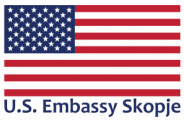FemFacts is a fact checking project focused on representation of women in the media. It grew out of NewsMavens, a unique news outlet that sought to balance men’s and women’s voices in the European media industry, by offering readers the perspective of women media professionals from all over the continent. When FemFacts started, NewsMavens had already built an international audience actively interested in reading news that women journalists and editors found most relevant in their regions. Through FemFacts, NewsMaven’s went a step further by diving into media reports whose newsworthiness is not necessarily in the events covered, but in the way the facts are presented – specifically on issues important for women, their rights and wellbeing.
The “ratings” they used to classify the fact checked material cover a broad range of manipulative, misleading or unethical tactics in media reporting which go beyond simple inaccuracies. These include:
Fake news, disinformation, manipulation of facts, conspiracy theory, pseudoscience, biased reporting, spin, censorship, click bait and hidden advertising.
The exploration of the European media landscape began in October 2018 and ended in June 2019. During that time, Femfacts published fact-checks and analyses written by 22 authors from 14 different European countries. Many of them are multilingual with experience studying and working in different European countries. Collectively, their authors performed 90 fact-checks where they rated claims found in 236 media and social media sources located in 24 European countries. The claims we rated were written or stated in 21 languages spoken across Europe.
Their authors also conducted in-depth analyses of various topics and phenomena, including insights gained through conversations with prominent women from the media, technology, activism and art world. We published 27 analysis and interviews which shed a light on some of the most important issues at the intersection of gender equality and media/ digital literacy today.
WOMEN USED AS BAIT ONLINE
Online media are quick to find any excuse to “examine” women’s bodies in a sexualized context and/or present them in the stereotypical roles of “seductresses” or “coquettes”. Even when no sexual context exists, such reports invent and use them as a marketing tool — a way to attract clicks and increase page views. Such treatment is applied to women in all public professions — from female athletes and sports commentators, to women politicians being presented through the lens of fashion/beauty.
What’s particularly striking is that women in public professions are not just described in needlessly sexual terms: they are often sexualized first and then reprimanded for their assumed “lasciviousness” or “fashion obsessions” next. Similar approaches have been detected in articles about high-ranking women politicians, where their physical appearance and/or fashion choices are used as lines of attack on their political positions.
Disrespect for women’s privacy and the tendency to reduce women to sex objects is particularly noticeable in media located in countries of the Balkan Peninsula. In some cases, the targets of such reports were not even public figures, but private persons who never agreed to appear in the public eye — and who would not be exposed in this manner if they were men. The media’s willingness to use personal social media profiles as a source of click bait material if it provides visually appealing photographs of women has supplemented old habits of voyeuristic prying into women going about their own business in public places. Both the frequency of such reports and the fact that they continue to appear in all types of media — including those considered to be mainstream — is worrying.
Yet another rating with a high click bait potential that often intersects with sexual objectification of women is pseudoscience, which deals mostly with issues related to health and sexuality. While some of this content — mostly related to sexuality — has misogynist undertones, not all pseudoscientific articles we rated are sexist. They are, however, potentially harmful to women because they offer “health advice” on pregnancy, menstrual hygiene or vaccines (specifically that against Human papillomavirus) which is not based on real science.
What’s interesting is the fact that all claims they rated as “pseudoscience” have spread internationally and were found in several countries and languages. Their rapid and wide proliferation is usually the doing of commercial fake news websites, “wellness” pages and blogs which propagate “alternative medicine” and, last but not least, tabloids. Notably, the Daily Mail has appeared repeatedly as a source of reports which “dumb down” real scientific research, distort its meaning in the process and shape it in a way that can attract readers’ attention, regardless of the facts.
However, what is more concerning is that violence against women is also being used as click bait. Combined with victim blaming, these headlines present violence against women as a spectacle rather than a crime, even in extreme cases. In three such examples, we found sensationalist headlines about partner violence, sexual abuse of a 13-year-old girl, and a “clickable” sexualization of a young woman’s violent death.
Source: https://newsmavens.com/special-review/1203/how-misinformation-fake-news-and-misogyny-affect-the-rights-of-women-in-europe


